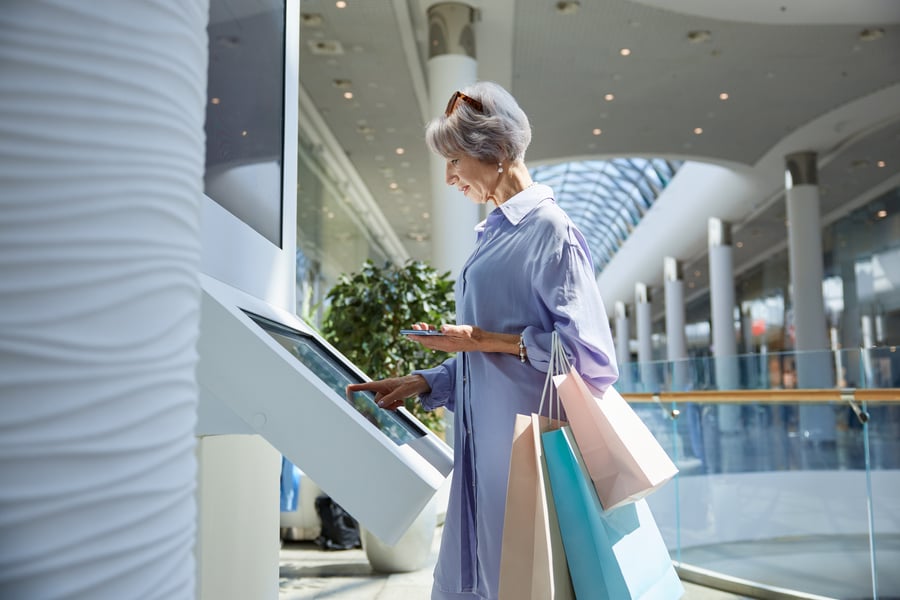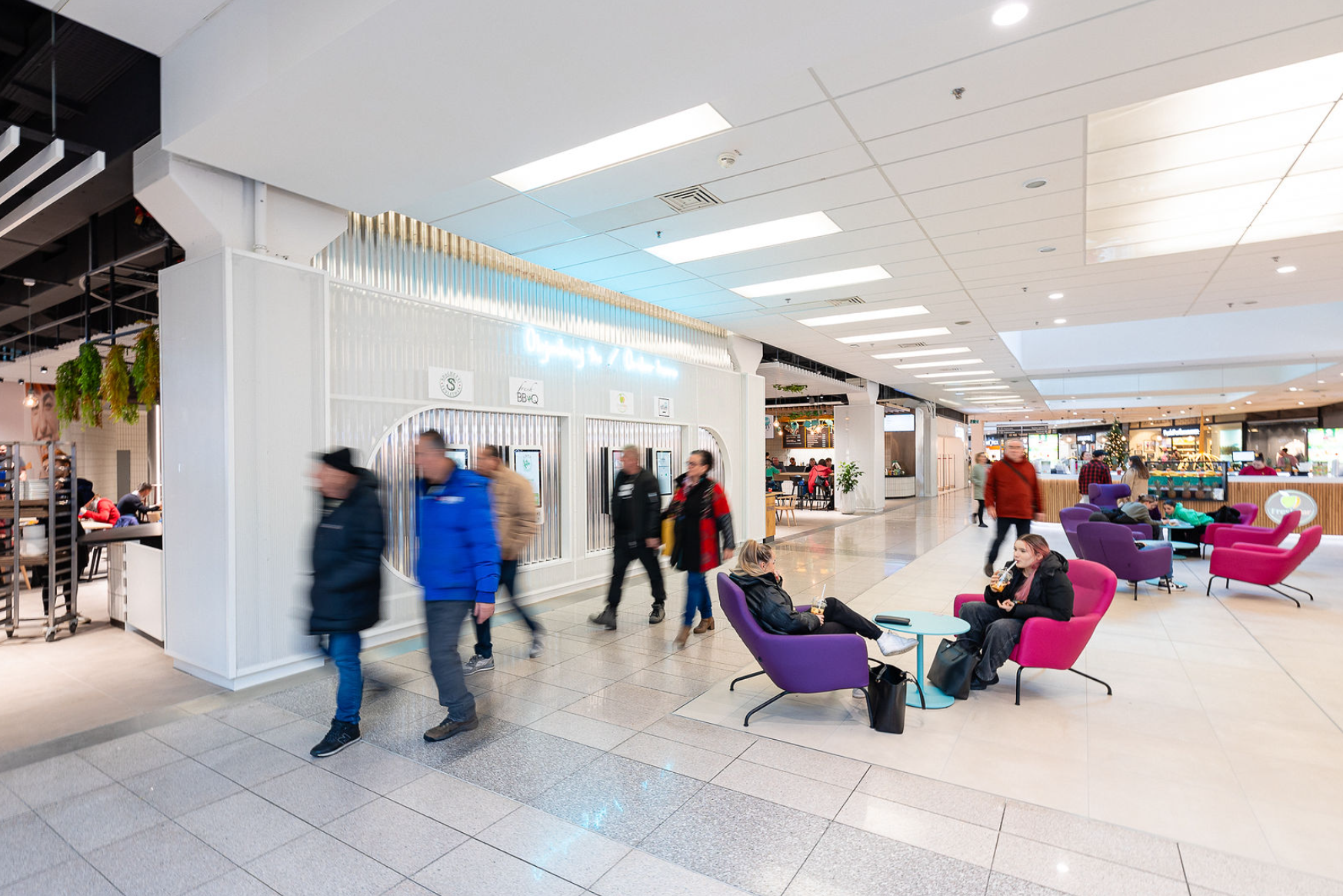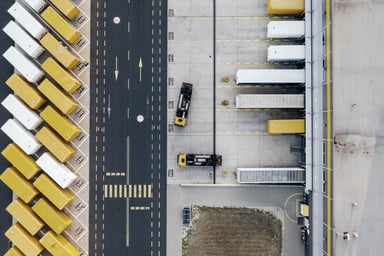
Innovative technologies in shopping centers: The trend is digitalization.

Shopping centers are currently not just places for shopping. Thanks to innovative technologies and digitalization, they are transforming into modern and interactive environments. They engage customers, offering experiences and enhancing their stay in various ways. Do you know how smart technologies and digital solutions are transforming shopping environments? And what advantages do they bring for visitors and operators?
Innovative Technologies in Shopping Centers
The digitalization of shopping centers includes a variety of solutions. You can imagine, for instance, smart lighting, various sensors, and the Internet of Things, which together allow shopping centers to optimize operations and improve customer experiences. Technologies enable the evaluation of visitor movement, analysis of their behavior, and customization of the environment to their needs. They optimize parking and the supply of fresh air to shopping centers.
Other smart technologies, such as interactive information kiosks, digital maps, and mobile applications, provide visitors with current information about shops, promotions, and services, even about where they parked their car. They simply serve to encourage people to return to shopping centers. Innovative technologies increase convenience, leading to higher customer satisfaction and loyalty.
Furthermore, there are modern tools that can specifically target passersby with push notifications via social media or SMS. Passersby suddenly become visitors and customers of the center, benefiting stores, restaurants, cafes, or cinemas, as well as the shopping center operator.

Digitalization of Shopping Centers and Parking Lots
Many centers have undergone modernization in recent years. As part of this, they have implemented digital solutions. For example, air exchange is now digitally controlled based on weather and visitor numbers. Shading and irrigation of green roofs are automated. Dozens of sensors monitor the functionality of solar panels.
One of the oldest shopping centers, Aupark in Bratislava, modernized and digitized its parking lots some time ago. It features smart technologies in its parking areas, with digital indicators that help visitors easily find available parking spaces. Surveillance systems that protect visitors' vehicles are also connected to a central monitoring station. Machine learning is increasingly being adopted. Artificial intelligence helps detect collisions in parking lots or identifies thieves stealing items from parked cars in garages. AI evaluates suspicious behavior and alerts security. Intelligent parking systems feature quick-lifting barriers, LED lighting, and navigation to available parking spaces. Forgetful drivers are advised to install an app that helps them locate their car, such as ParKing. It is no longer possible to leave a parking lot before the end of a free parking period and return immediately. Systems monitor vehicle registration numbers and allow entry to the parking lot only after a specific duration. Thanks to digitalization and newer software solutions, it has also been possible to adjust the reading of new Slovak registration numbers. They contain the digit "0" with a dot in the middle, and initially, some sensors had difficulty identifying zero as zero, necessitating manual entry by shopping center employees.
Several companies, including Slovak ones, are developing digital solutions for shopping centers. For instance, Pygmalios and ProfitUp focus on tracking crowd density, counting customers, and other measurements. They provide stores and lessors with detailed and clear analyses that track sales, margins, revenue per square meter of store space, and dozens of other indicators. Stores can observe hourly or daily trends. They can better schedule shifts, strengthen the sales team during peak shopping times, or adjust marketing activities to attract customers during slow hours. Digital tools allow them to understand customer purchasing behavior. When integrating data from cash registers, it becomes clear how often customers shop, which products they buy, and in what combinations. Business owners can identify which customer segments are price-sensitive, which groups of loyal clients will be the first to come after new product launches, and which activities attract the most entirely new customers to the store.
Digitalization of Food Courts in Shopping Centers
Europa Shopping Center is the largest shopping center in Banská Bystrica and the first center with a so-called "smart food court." The Slovak technology startup Eatster, in collaboration with CBRE, took care of comprehensive digitalization of ordering processes in restaurants, from cash registers and kitchen displays to call displays, self-service kiosks, and QR codes with mobile and computer applications.

“Nowadays, digitalization is everywhere, and we didn’t want to fall behind. Renovations of this scale don’t happen often, and we wanted our food court to remain relevant and modern even in 5 or 10 years. It also enhances the prestige of the center, attracting more modern gastro concepts that will also appreciate reduced operational costs and higher revenues thanks to digitalization. Last but not least, it provides us with valuable data that we can work with to provide the best possible services for our visitors and tenants,”

Do you know who Bella is? She was a new addition to the operation of Café Dias in the Bratislava shopping center Bory Mall. In a pilot project, the Slovak bookstore chain Panta Rhei deployed the robot BellaBot in its cafes. The BellaBot is inspired by a famous cartoon cat and, thanks to artificial intelligence, is not just a silent servant. It can prompt customers to pick up their orders and also alert them if they get in its way while it is heading to tables. Robotic service will surprise you in several cafes and restaurants in Bratislava’s Aupark.
However, robots do not just serve. Kas is the latest addition to the family of autonomous cleaning robots, Avidbots. It features advanced navigation and can avoid all obstacles while cleaning stores and hallways in shopping centers. It can navigate around customers and obstacles, even in tight spaces. Today, robots can also restock shelves in stores or patrol aisles to check for out-of-stock items and ensure they are properly arranged, like the Tally robot.
Fun and Experiential Shopping
Shopping centers are increasingly transforming into entertainment-shopping centers. People seek experiences; they want to spend a pleasant part of the day, go to lunch and the cinema, and shop for a new shirt or sneakers. Today, it is no longer surprising that their shopping journey is accompanied by digital advertising screens, digital stands, or even digital avatars, that is, virtual characters. Virtual reality and augmented reality bring new possibilities for marketing and entertainment in shopping centers. Visitors can try virtual store tours, interactive games, and navigate through laser mazes. All these features increase the attractiveness of shopping centers, making them almost magnetic.
However, few visitors realize that the free Wi-Fi in shopping centers has a different cabling and infrastructure than the Wi-Fi and internet for shops and the center's management. These are two separate networks. Safety and privacy protection play a crucial role in digitalization.
The digitalization of shopping centers is an essential step for them to become modern and competitive. It makes them more attractive to potential investors. Innovative and smart technologies bring numerous advantages for visitors and operators, primarily increasing the attractiveness of shopping centers.

